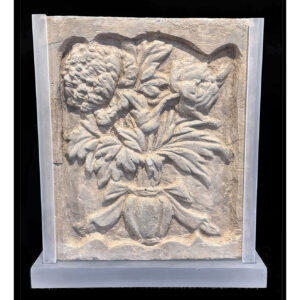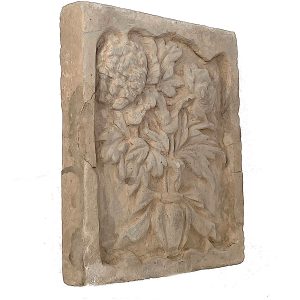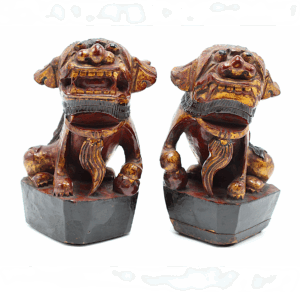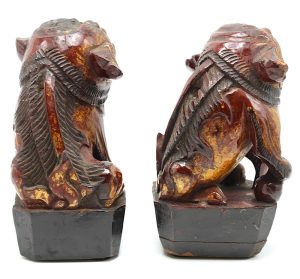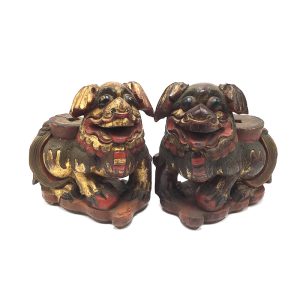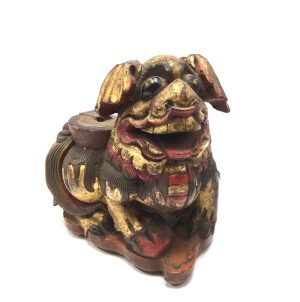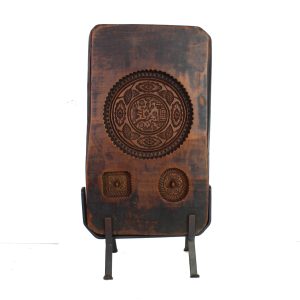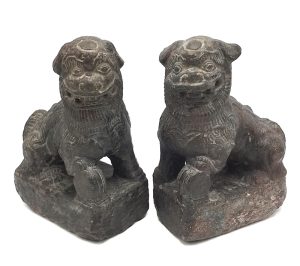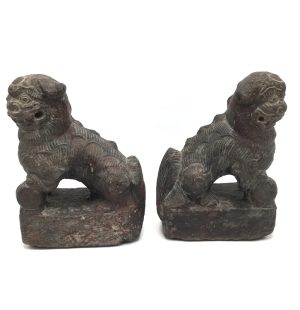Showing 25–29 of 29 results
-


$995.00
H: 11” W: 9.5” D: 1.65” | FREE SHIPPING
This earthenware brick tile bordered with a deep scalloped frame depicts a vase with a bouquet of propitious flowers: a chrysanthemum and a peony wrapped with an elegant ribbon. Tiles like this were made to decorate the large numbers of buildings created during the prosperous Song dynasty and to adorn tombs. This elegant brick is in good condition for its age with expected chips and cracks, some restoration of background and a re-glued frame break on each side. It has earth adherents from its burial in a tomb.
-
Sale!


$395.00 Original price was: $395.00.$350.00Current price is: $350.00.
H: 5.75″ W: 3.25″ D: 2.75″ | SOLD
Each of this whimsical gold and red-burgundy lacquered pair of male fu lions sits erect on a high pedestal heads thrown back with flaring ears, bulging eyes, decorative stylized manes and a small bushy tail. Their spirituality is displayed by the pair silently emitting the blessed mantra “aum”: the open mouthed lion forming an “au,” and the other completing it with a closed mouth to form “mmm.” The workmanship on these pieces is masterful, although rustic and provincial, and they are rare with their Buddhist symbolism and because most pairs of fu lions pairs were lost during China’s modernization.
-


$595.00
Whimsical carvings of fu lions were the most popular mythical animals in Chinese homes, especially during the Ming and Qing dynasties, as free standing statues, designs on furniture, architectural elements and functional pieces in private homes or gardens or on a home altar to bring fu and the blessings to the home. This incredibly cute…
-


$850.00
The Mid Autumn Moon Festival, also called the Mooncake Festival, is the 2nd most important holiday after the Chinese New Year, celebrated when the full moon is at its brightest point on the 15th day of the 8th month of the lunar calendar. It is a time for multi-generational gatherings when families dine together in harmony,…
-


$695.00
H: 8” W: 5.5” D: 3.25” | SOLD
This is a really great pair of stone small fu lions with lots of character, humor, and detailed carving. Each of these very joyous creatures has open mouthed smiling faces with radiant eyebrows and tufts below their chins, scalloped manes and bushy tails. Carved from one piece of a blackish hard stone they could easily withstand additional wear of the elements in a garden. Pairs of fu lions like this belong in the home of people who appreciate spirituality and wish for happiness and fortune along with a touch of wit and whimsy.
End of content
End of content

